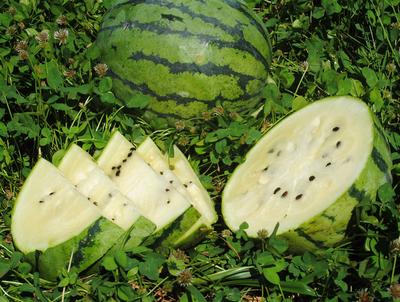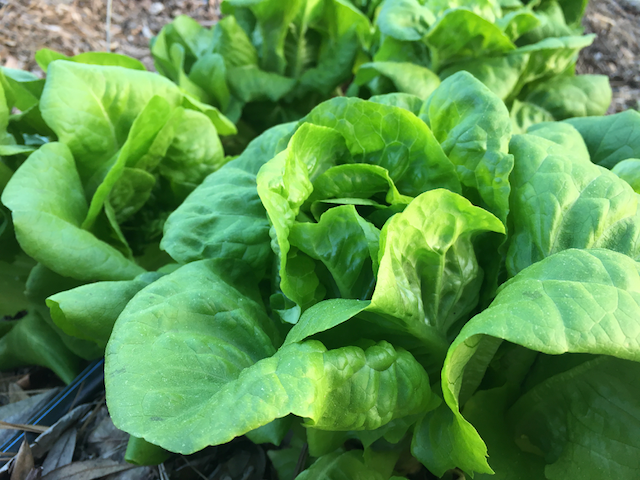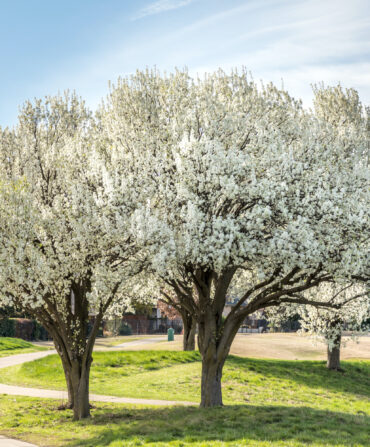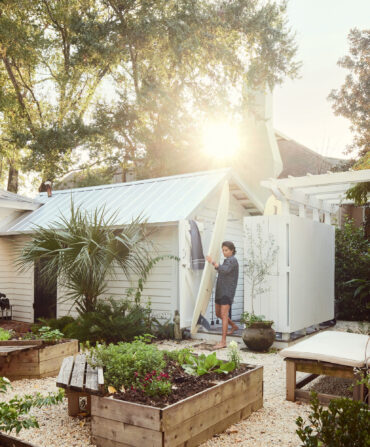“I wish we could bottle and sell the hope and enthusiasm that comes with the newness of a fresh start every spring, a stack of seed catalogs, and the come-hither whispers of new plants at local garden shops,” says Mary Beth Shaddix, who with her husband, the nurseryman David Shaddix, grows a garden filled with both new and tried-and-true vegetable varieties each year in Shelby County, Alabama. “Hope keeps me going back to the garden, watching, studying, staying surprised.”
As those seed catalogs hit mailboxes across the South, gardeners reconnect with the roots that link us to plant people through the ages. “If you want to grow heirloom varieties or save seed from your plants, you’ll need to order seeds from a catalog that specializes in heirloom varietals and grow your own,” says Michael Washburn, the garden manager at Blackberry Farm. His role model, Blackberry’s master gardener John Coykendall, has been doing that for decades. “John will be digging deep into his freezers this winter and growing out seeds from his personal collection. His collection ends up in seed catalogs for the general public to grow and preserve. It’s a great way for him to get his seeds into the hands of the many.”
We asked garden folks from around the South—plus a few readers in our Talk of the South newsletter—to share the seeds they’re ordering and ready to get in the ground.
“I couldn’t be more delighted to put my sugar snap peas from John Scheepers Kitchen Garden Seeds in the ground this week. We grew our first sugar snaps last year, and it was the highlight of the garden box, whether we were eating them straight off the vine; drizzling them with a little sesame seed oil, kosher salt, and a sprinkle of sesame seeds; or sharing a bowlful with the neighbors. —David DiBenedetto, G&G editor in chief
A New-to-Him Cuke
“I live in Lynchburg, Virginia. My seed trays are already prepared for heirloom tomatoes, cabbage, and peppers. New favorite cucumber is an Indian variety, Poona Kheera, from the Rare Seeds catalog. It looks like a potato when large and ripe. Remains apple crisp, dense, and never bitter. Super versatile and Not my GrandPaw’s cuke!” —William M., Talk of the South newsletter reader
Small but Mighty Melons
“Good cantaloupes are hard to come by in the stores, so I’ll probably try my hand at the Sleeping Beauty variety this year—it’s perfect for the half-acre tester garden in my backyard. And I always associate yellow watermelons with my birthday, in August. Traditional yellow watermelons take longer to grow than red ones, and it’s the one treat I make sure I have every year. When we were growing watermelons on our farm, we started out with Moon and Stars watermelon but later switched over to OrangeGlo. I’m feeling nostalgic and considering planting Moon and Stars seeds again, if I can spare the space. If not, I’ll go back to the much smaller watermelon White Wonder, a unique looking melon with a crisp sweetness to it.” —Latria Graham, G&G contributing editor

Sweet Strawberries
“I am excited about the various white and red alpine strawberries we’ll be growing from seed. They are tedious—they can take three weeks to germinate and must be babied along—but are well worth the work. You can’t just go to your local garden center and find alpine strawberries and, even if were able to, you would never find the varieties found when ordering from seed catalogs.” —Michael Washburn, garden manager at Blackberry Farm
Heirloom Tomatoes
“A seed ordering tip: Learn to read those variety descriptions with a discerning eye,” says Mary Beth Shaddix. “Sometimes it is what isn’t said that is the most telling. Beware the poetic proclamations of rainbows, stripes, and astonishing historical tales where taste is not mentioned.” Her favorite tomato varieties deliver on that taste, including Black Krim—“a rich, dark-fleshed slicer with deep, smoky flavor,” she says. “It’s what I imagine the old-fashioned tomato flavor must be that everyone seeks.” Sun Gold tomatoes are “a prolific producer of cherry-sized fruits that could trick even a kid into liking tomatoes. Eating warm from the vine is a pretty fantastic treat for the gardener.” And Dr. Wyche’s Yellow is “a satisfying slicer tomato in vibrant yellow with astonishing flavor.”
“I think the best seeds are those shared by a friend or neighbor. I made the mistake once of helping my mother-in-law clean up her pantry in anticipation of a giant party, and all the little pilings of plant-like detritus that I cleaned off her shelves and out of pretty vases turned out to be her prized life-long collection of rare seedlings from around the world (her husband was an ambassador). Oops. Now I know better, though I should point out that my own growing seed stash is jarred and labeled! This year, I’m going to try my hand at agapanthus seeds that I harvested and dried out in late summer. Not sure if it will work. If it doesn’t, I’ll hit up a catalog, for sure.” —Allston McCrady, G&G contributor
Salad Starters
“Sow True Seed, Victory Seeds, and the Southern Exposure Seed Exchange are go-to places for standard and heirloom seed. Key Lime is a heat-tolerant heirloom lettuce developed over a century ago in Southern Florida. A lovely fresh butterhead variety. Only one important radish was developed in and for the South—the red-skinned, icicle-shaped Cincinnati Market Radish developed in the greenhouses of Covington, Kentucky, across the river from Cincinnati. An American heirloom held by the Seed Savers Exchange.” —David Shields, writer and historian

“Every few years, it seems, a new super-hot pepper jostles its way into the record books and seed catalogs. The Trinidad Scorpion was once deemed the world’s hottest; now it’s the Carolina Reaper. Rumor has it that a new one, code-named Dragon’s Breath, is headed toward the arena. Who plants these murderous things? I do. Reapers, Scorpions, Ghosts, Douglahs, Red Savinas. They’re the supervillains of my garden. I like plants that exude some menace. After I’ve maxed out on making hot sauce I smoke what’s left of the harvest and then buzz them in a food processor (outside). A (very, very) light sprinkle wakes up most any dish, and the jarred flecks give my children something to threaten one another with at the dinner table. I save just a small jar for myself. The rest I give to my enemies.” —Jonathan Miles, G&G contributing editor
Vast Veggies
“A discovery from last year that I will be growing more of this coming year is the Chinese Python Snake Bean. Up to sixty-inch beans smell like popcorn and are used like a green bean. It absolutely loves our Lowcountry heat. This one produced beans until early November. I also use it in flower art installations. My favorite large-leaved Asian green is Senposai—a Japanese cross between Japanese mustard spinach and regular cabbage. The dinner-plate leaves are tender, succulent, and amazing for wraps. This is a cool-season veggie and an amazing producer that’s so perfect for our Southern winters and spring veggie gardens.” —Jim Martin, Compost in My Shoe founder
A Traveling Tomato
I receive a seed catalog from Southern Exposure Seed Exchange and I always order the Aunt Lou’s Underground Railroad Heirloom tomato just because I like the story! —Lisa J., Talk of the South newsletter reader
New Virginia Garden Growers
“Since we didn’t move to Virginia from South Carolina until June last year, this will be our first full season in a new planting zone, which is exciting and intimidating at the same time. Luckily, my mother-in-law, who lives on our property with us, is a fantastic gardener. With her help, I hope to get some of these Dwarf Desert Star Tomatoes to grow along with these Sumter Cucumbers developed at the Clemson Agricultural Experiment Station in 1973. I’ve interviewed plenty of Clemson Extension agents for stories over the years, and there’s no group of ag scientists I’d trust more. Plus, quick pickles are one of my favorite summer garnishes, and I’d love to have them fresh from my own harvest.
—Kinsey Gidick, G&G contributor
“I’m eyeing these historic and gorgeous dusty yellow zinnias right now. I only have a tiny patch of plantable ground at my home in Charleston, but I have an abundance of terra-cotta pots that I can’t wait to fill with herbs and container veggies this spring. I like how this collection from Southern Exposure Seed Exchange gathers a group of seeds with legacy, including an heirloom watermelon, okra, zippy dill, a cheery sunflower, and the taste of a Southern summer itself—cherry tomatoes.” —CJ Lotz, G&G senior editor
“I always order my seeds from the Thomas Jefferson Center for Historic Plants. The team at Monticello harvest the seeds from the mountaintop gardens—I even helped them do it when I attended the Historic Landscape Institute. I typically order cleome, which I love to grow in a big mass. It self-seeds beautifully and blooms continuously during the South’s hot summers. And the story of Tennis Ball lettuce is amazing. It is documented as one of Jefferson’s favorites, but it was thought to be lost. Peter Hatch found the seeds at the National Seed Storage Laboratory in Colorado some years ago and Monticello brought it back to the garden. It’s super tasty.” —Lauren Northup, G&G contributor

A Riot of Flowers and Veggies
“Dr. Al Pertuit, a favorite professor of horticulture for a generation of Clemson students, taught us about life and people; essential for any green business to understand. He said stability in culture and economy meant people wanted elegant, timeless, sort of bland plants. But in chaotic times, times of uncertainty made people seek escape with showy, brilliant, exciting plants. This year, I’m totally tarting up the farm with some old fashion bedding plants like four-foot-tall, go-to-bed red salvia; hot pink, five-foot-tall spider flowers; and purple Brazilian Bachelor’s Buttons, all dwarfed by the ten-foot-tall (yep, ten feet from spring-sown seeds) yellow candelabra bush.” —Jenks Farmer, plantsman








